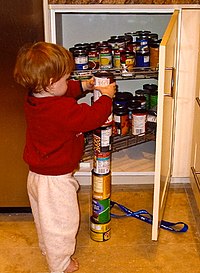
Photo from wikipedia
AIM: The present study investigates the production of extended-spectrum beta-lactamases (ESBL) and the formation of biofilm among different bacterial pathogens. METHODS: The study conducted prospective analysis on bacteria isolates (Gram-negative)… Click to show full abstract
AIM: The present study investigates the production of extended-spectrum beta-lactamases (ESBL) and the formation of biofilm among different bacterial pathogens. METHODS: The study conducted prospective analysis on bacteria isolates (Gram-negative) from patients who have diagnosed with infections with bacteria between October 2020 and January 2022. RESULTS: The results showed that there were 53 biofilm producers in Escherichia coli. In contrast, Pseudomonas aeruginosa was observed to have the highest percentage, with 32/40 (80%) isolates being biofilm producers. The least number of isolates were Morganella morganii (n = 2) with two (100%) biofilm producers. The resistance in the biofilm positive isolates was high compared with biofilm negative. About 88% of phenotypic ESBL-positive isolates were biofilm producers, and 97% of cefotaxime-resistant biofilm-positive isolates were genotypic positive for CTX-M, TEM, and SHV genes. CONCLUSION: The present study has shown that protection against antibiotics through mucus production is possible due to bacteria’s reduced metabolic activity and diffusion of antibiotics across the biofilm matrix. In this study, all the bacterial strains of E. coli and Klebsiella pneumoniae were reported to be MDR and competent for establishing biofilm.
Journal Title: Open Access Macedonian Journal of Medical Sciences
Year Published: 2023
Link to full text (if available)
Share on Social Media: Sign Up to like & get
recommendations!